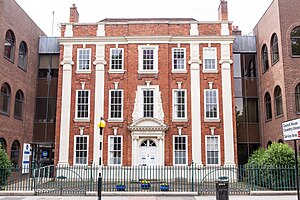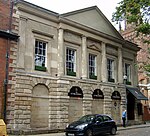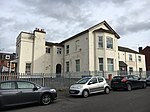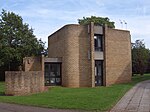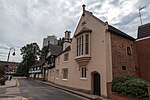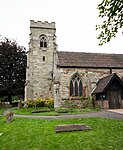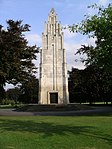
Southam is a market town and civil parish in the Stratford-on-Avon district of Warwickshire, England, located about 6+1⁄2 miles (10 km) east-southeast of Leamington Spa. In the 2021 census, the population of Southam was 8,114.

The Cathedral Church of Saint Michael, commonly known as Coventry Cathedral, is the seat of the Bishop of Coventry and the Diocese of Coventry within the Church of England. The cathedral is located in Coventry, West Midlands, England. The current acting bishop is Ruth Worsley and the current dean is John Witcombe.

Meriden is a village and civil parish in the Metropolitan Borough of Solihull, West Midlands, England. Historically, it is part of Warwickshire and lies between the cities of Birmingham and Coventry. It is located close to the North Warwickshire district border within a green belt of the countryside known as the Meriden Gap and is in the ecclesiastical parish of the Diocese of Coventry.

Coventry, a city in the West Midlands, England, grew to become one of the most important cities in England during the Middle Ages due to its booming cloth and textiles trade. The city was noted for its part in the English Civil War, and later became an important industrial city during the 19th and 20th centuries, becoming the centre of the British bicycle and later motor industry. The devastating Blitz in 1940 destroyed much of the city centre, and saw its rebuilding during the 1950s and 60s. The motor industry slumped during the 1970s and 80s, and Coventry saw high unemployment. However, in the new millennium the city, along with many others saw significant urban renaissance and in 2017 it was announced that the city had been awarded the title of 2021 UK City of Culture.

Carlisle Cathedral, formally the Cathedral Church of the Holy and Undivided Trinity in Carlisle, is a Grade I listed Anglican cathedral in the city of Carlisle, Cumbria, England. It was founded as an Augustinian priory and became a cathedral in 1133. It is also the seat of the Bishop of Carlisle.

Cheylesmore is a suburb in the southern half of the city of Coventry, West Midlands, England. It is one of Coventry's largest suburbs, sharing borders with Whitley and Stivichall in the South, extending into Coventry city centre and bordering with Earlsdon in the North. Locally pronounced as 'Charlesmore' or occasionally 'Chellsmore', Cheylesmore has two shopping parades situated in Daventry Road and Quinton Park. These shops overlook a small park and pool known as Quinton Pool. It takes its name from Cheylesmore Manor. The original name probably derives from 'Chez Les Morts' since a huge plague pit was found during excavations after the Second World War. The city gate leading to the area was labelled as Childsmore Gate on old maps, an alternative etymology of the name.
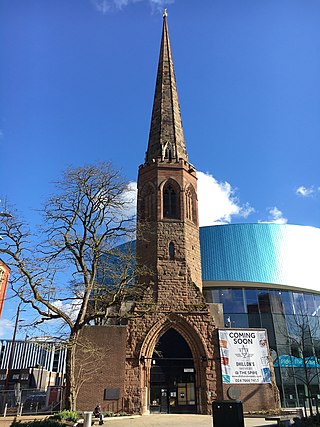
Greyfriars was a medieval Franciscan priory in Coventry, England. The original monastic buildings were lost in the Reformation; the spire standing on the site today was most recently part of a 19th-century church that was destroyed in an air raid in the Second World War. The spire, also called Christchurch Steeple, is a Grade II* listed building.

The buildings known as Whitefriars are the surviving fragments of a Carmelite friary founded in 1342 in Coventry, England. All that remains are the eastern cloister walk, a postern gateway in Much Park Street and the foundations of the friary church. It was initially home to a friary until the dissolution of the monasteries. During the 16th century it was owned by John Hales and served as King Henry VIII School, Coventry, before the school moved to St John's Hospital, Coventry. It was home to a workhouse during the 19th century. The buildings are currently used by Herbert Art Gallery and Museum, Coventry.

All Saints Church is a redundant Anglican church in the parish of Chadshunt, Warwickshire, England. It is recorded in the National Heritage List for England as a designated Grade II* listed building, and is under the care of the Churches Conservation Trust. It stands by the side of the road from Kineton to Southam. Its general appearance is "long, low and massive".

St Bartholomew's Church is in Penn, a district of Wolverhampton, West Midlands, England. It is an active Anglican parish church in the deanery of Trysull, the archdeaconry of Walsall, and the diocese of Lichfield. Its benefice is united with that of St Anne, Lower Penn. The church is recorded in the National Heritage List for England as a designated Grade II* listed building.

Ford's Hospital, Coventry, traditionally known as Grey Friars Hospital, is a grade I listed 16th century half-timbered almshouse in Greyfriars Lane, Coventry. It was founded by the merchant William Ford in 1509 to provide accommodation for six elderly people: five men and one woman. Despite the earlier name of "Grey Friars", it bears no relationship to the Franciscan Order but was so named because of its location on Greyfriars Lane.

There are 19 Grade I listed buildings in the City of Coventry. In the United Kingdom, a listed building is a building or structure of special historical or architectural importance. These buildings are legally protected from demolition, as well as from any extensions or alterations that would adversely affect the building's character or destroy historic features. Listed buildings in England and Wales are divided into three categories—Grade II buildings are buildings of special interest; Grade II* buildings are Grade II buildings of particular interest; and Grade I buildings, which are those of "exceptional" interest. Only around four per cent of listed buildings are given Grade I status.
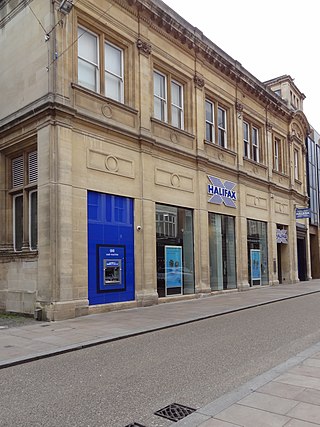
The cellars of 21 and 22 High Street are listed buildings in the centre of Coventry, in the West Midlands of England. The cellar of No 21 is a Grade II listed building, while that of No 22 is Grade I listed, meaning that they are sites of "special architectural or historic interest". The cellars were formerly a single crypt, built in the 15th century (CE). They are constructed from sandstone, and measure approximately 17 x 20 feet and 56 x 27 feet. Both are supported by large octagonal columns and ribbed vaulting. They were listed in 1955 and 1975. The cellars may be some of the oldest remaining traces of domestic building work in Coventry, and several similar cellars exist elsewhere on High Street and other nearby streets, some dating back to the 14th century. The cellars are divided into two aisles, each containing four bays, which are divided by the octagonal columns.

There are ten scheduled monuments in Coventry. In the United Kingdom, a scheduled monument is a "nationally important" archaeological site or historic building that has been given protection against unauthorised change by being placed on a list by the Secretary of State for Digital, Culture, Media and Sport; English Heritage takes the leading role in identifying such sites. Monuments are defined in the Ancient Monuments and Archaeological Areas Act 1979 and the National Heritage Act 1983. Scheduled monuments—sometimes referred to as scheduled ancient monuments—can also be protected through listed building procedures, and English Heritage considers listed building status to be a better way of protecting buildings and standing structures. A scheduled monument that is later determined to "no longer merit scheduling" can be descheduled.

Charterhouse, Coventry is a grade I listed building on London Road, Coventry, in the West Midlands of England.

The Mediaeval Stone Building is an unidentified mediaeval ruin on Much Park Street, Coventry, in the West Midlands of England. The ruin is a Grade II* listed building; it is believed to have been built in the late 13th or early 14th century and was uncovered by a German bomb during the Coventry Blitz. The building, built from red sandstone, was rectangular; one of the walls contains a single pointed arched window in one wall. The shell of the cellar remains—one of several similar cellars in Coventry city centre including those at 21–22 High Street, Coventry and 38–39 Bayley Lane—as do three of the four walls from the ground floor. However, the vault has been lost.

Packwood is a medieval settlement and former civil parish of 1760 acres, now in the counties of the West Midlands and Warwickshire, England. In 1194 the ownership of Packwood estate was disputed between the Bishop of Coventry and the Prior of Coventry. In 1931 the parish had a population of 990. The small rural area includes the Grade I listed sixteenth century National Trust property Packwood House, the separate Packwood Hall and its adjacent church of St Giles.

Tidmington is a village and civil parish in the Stratford-on-Avon District of Warwickshire, England. It is 11 miles (18 km) south from the town of Stratford-upon-Avon, and at the extreme southern edge of the county bordering Gloucestershire. Within the parish is the Grade II* listed c.1600 Tidmington House, and the Grade II* early 13th-century church of unknown dedication. At the 2001 Census, which for statistical purposes now includes the neighbouring parish of Burmington, the combined population was 153.

St Laurence's is the Church of England parish church of Foleshill, Coventry. It is a Grade II* listed building with features, including the tower, from the 15th century. It is located on Old Church Road (B4082) to the north-east of Coventry city centre.
